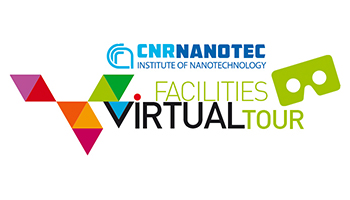Lightwave microscopy and attosecond optolectronics
Abstract
The electric field waveform of light contains the history of its interactions with matter. However, it oscillates so quickly that that only after the arrival of measurement techniques with attosecond time resolution have we been able to record it. Time-domain measurements of subtle changes in the waveform, and their use to time the rate of transitions inside of solids have given us a detailed, cycle-by-cycle picture of energy transfer[1]. In turn, this rapidly modulated energy exchange can be used to perform petahertz-bandwidth metrology in solids[2]. Extending these techniques to imaging and microscopy has some fascinating implications. Completely resolving the electric field at each pixel of an image, building on electro-optic sampling in the near infrared[3], allows the direct measurement of electric field dynamics inside photonic devices and structures, with a wide range of possible applications in other fields[4]. The underlying nonlinear optics provide promising routes to high-resolution, time- or frequency-resolved imaging that circumvents traditional limits imposed on imaging optics. The imaging modality opens a path towards hyperspectral microscopy with simultaneous sub-wavelength resolution and wide-field imaging capabilities. We apply this to the study of the spatiotemporal control over broadband lightwaves offered by metasurface optics, and a time-resolved look at field enhancement in subwavelength structures.
[1] A. Sommer, E.M. Bothschafter, S.A. Sato, C. Jakubeit, T. Latka, O. Razskazovskaya, H. Fattahi, M. Jobst, W. Schweinberger, V. Shirvanyan, V.S. Yakovlev, R. Kienberger, K. Yabana, N. Karpowicz, M. Schultze, and F. Krausz, Nature 534, 86 (2016).
[2] S. Sederberg, D. Zimin, S. Keiber, F. Siegrist, M. S. Wismer, V. S. Yakovlev, I. Floss, C. Lemell, J. Burgdörfer, M. Schultze, F. Krausz, and N. Karpowicz, Nature Communications 11, 430 (2020).
[3] S. Keiber, S. Sederberg, A. Schwarz, M. Trubetskov, V. Pervak, F. Krausz, and N. Karpowicz, Nature Photonics 10, 159 (2016).
[4] I. Pupeza, M. Huber, M. Trubetskov, W. Schweinberger, S. A. Hussain, C. Hofer, K. Fritsch, M. Poetzlberger, L. Vamos, E. Fill, T. Amotchkina, K. V. Kepesidis, A. Apolonski, N. Karpowicz, V. Pervak, O. Pronin, F. Fleischmann, A. Azzeer, M. Žigman, and F. Krausz, Nature 577, 52-59 (2020).
Short Bio: Nick Karpowicz received his PhD in Physics in 2009 from Rensselaer Polytechnic Institute in Troy, NY in the US, and then moved to the Max Planck Institute of Quantum Optics, in Garching, Germany as a postdoc on a fellowship from the Alexander von Humboldt Foundation. In 2012, he became group leader of the attosecond experiments group at the same institute, and has now joined the CNR NANOTEC, starting in November, 2019. He is a co-author of 42 scientific publications with h-index of 28, and more than 5,000 citations.
